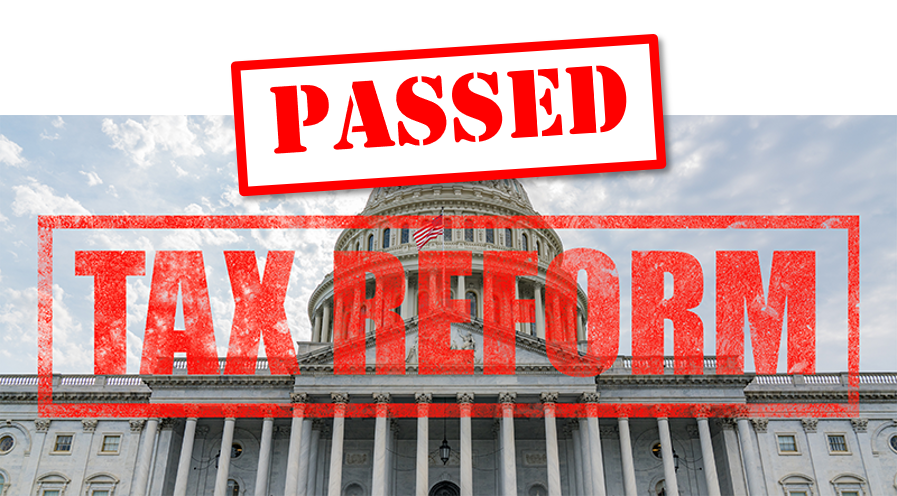Whether you’re an individual taxpayer or a business owner, you woke up to good news this morning. Both houses of Congress have passed the Tax Cuts and Jobs Act, and President Trump is poised to sign it soon. It will take some time for everyone to digest all the details of this massive bill, but there are many things we know for sure. Take a look.
New law offers relief for corporations and small businesses, as well as individual taxpayers
After months of discussion, crafting, and negotiation, Congress has passed the Tax Cuts and Jobs Act. President Trump is expected to sign it into law before the end of 2017.
Because the House and Senate bills seem to change almost daily, you may have had a hard time keeping track of what was finally included in this 500+ page document. Here are some of the primary ways it may affect you as of January 1, 2018.
For Individuals
The two most significant changes for individual taxpayers are:
- An increase in the standard deduction. Single filers will get a $12,000 deduction; heads of household, $18,000; and joint filers, $24,000. The personal exemption, though, has been discontinued. These provisions will sunset in 2025.
- A change in the income tax brackets. There will still be seven of them, but their cutoff points will be lower: 10, 12, 22, 24, 32, 35, and 37 percent.
Other new rules will affect:
- Property tax, plus either sales tax or state/local income tax paid. You’ll be able to deduct a total of up to 10,000 per year. A special provision will disallow prepayments of 2018 taxes paid in 2017.
- Mortgage interest. This deduction, which can be applied to the acquisition of either first or second homes, is limited to debt of 750,000. Interest on HELOC loans will not be deductible. For those who have existing loans, the current $1,000,000 cap is retained. The equity debt deduction will be eliminated.
- Medical deductions. In order to claim this, your medical expenses must add up to at least 7.5 percent of adjusted gross income. Beginning in the 2019 tax year, this will increase to 10 percent.
- Charitable donations. This deduction remains in place.
- Educator expenses, student loan interest, and graduate student tuition waivers. These above-the-line deductions have been retained in the Congress-approved version.
- Moving expenses. This deduction has been repealed (with the exception of active-duty military personnel).
- Alimony. As of the 2019 tax year, this deduction will be eliminated. Alimony recipients will no longer consider their alimony as income.
- Child Tax Credit. This partially refundable credit has increased to $2,000.
- 529 deduction. Tax fee distributions from 529 Plans will be limited to 10,000 per year. Taxpayers can now use funds from 529 accounts for K-12 private schools and to help with homeschooling costs.
- Miscellaneous deductions. The bill disallows the deduction of all miscellaneous deductions.
- Casualty losses. These will continue to be allowed, but only for catastrophic events like hurricanes that are certified by the government.
- Estate tax exemption. This will double to approximately 11 million per person, adjusted annually for inflation.
This, of course, is not a comprehensive list. Nor does it thoroughly examine each new rule’s implications for your specific financial situation. We’d encourage you to connect with us for that kind of personal analysis.

